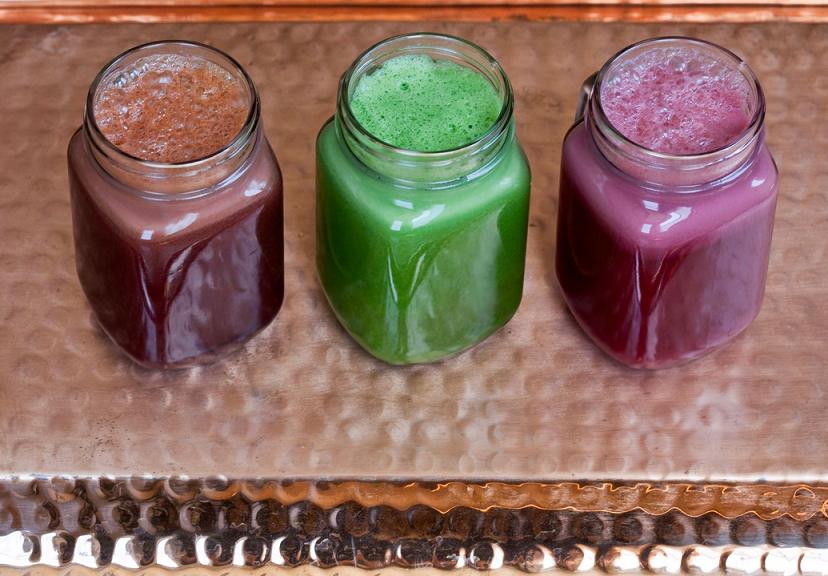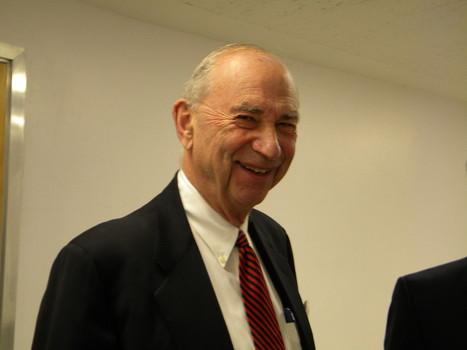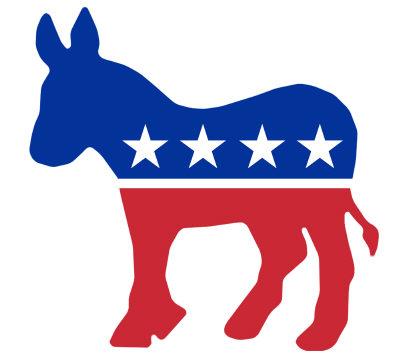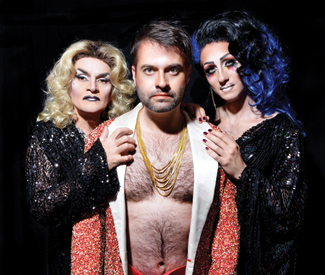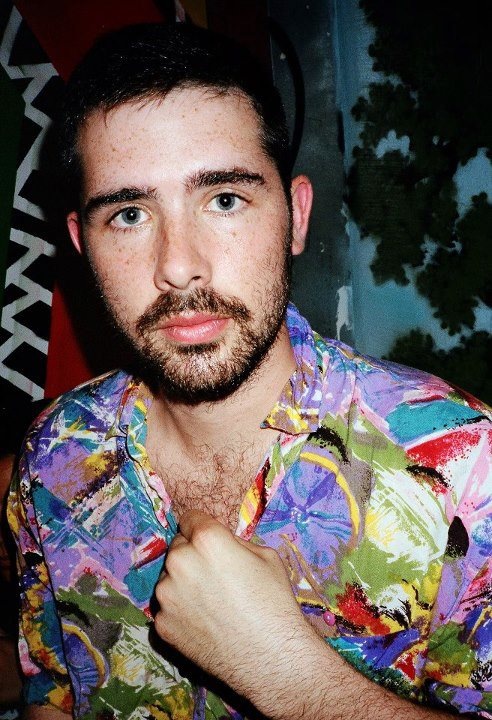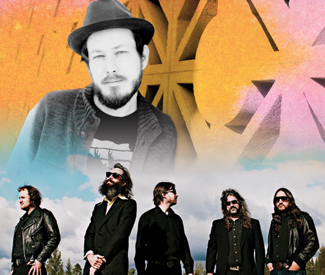Since club life is unpredictable, it’s a good idea to call ahead or check the venue’s website to confirm bookings and hours. Prices are listed when provided to us. Visit www.sfbg.com/venue-guide for venue information. Submit items for the listings at listings@sfbg.com. For further information on how to submit items for the listings, see Picks.
WEDNESDAY 23
ROCK/BLUES/HIP-HOP
Buckeye Knoll, These Old Wounds, Creak Bottom of the Hill. 9pm, $10.
Gojira, Devin Townsend Project, Atlas Moth Fillmore. 8pm, $20.
Guido vs Nathan Temby Johnny Foley’s Dueling Pianos. 9pm, free.
Headnodic, Skins and Needles, DJ Zeph Boom Boom Room. 8pm, $5.
Freddie Hughes Royal Cuckoo, 3203 Mission, SF; www.royalcuckoo.com. 7:30pm, free.
"Jason Becker Not Dead Yet 2" Slim’s. 8pm, $31. With Steve Morse, Uli Jon Roth, Richie Kotzen, and more.
Jhameel, Coast Jumper Cafe Du Nord. 8:30pm, $10.
Mumlers, Ohioan, Whiskerman Hemlock Tavern. 8:30pm, $7.
Panic is Perfect, Institution, Red Valley Trappers Elbo Room. 9pm, $6.
Terry Savastano Johnny Foley’s. 9pm, free.
Tambo Rays, Evil Eyes, Moonbell, Jesus Songs Brick and Mortar Music Hall. 9pm, $6.
Midge Ure Red Devil Lounge. 8pm, $25-$30.
JAZZ/NEW MUSIC
Shawn Colvin Yoshi’s SF. 8pm, $35.
Quinn DeVeaux Rite Spot. 9pm, free.
Dink Dink Dink, Gaucho, Eric Garland’s Jazz Session Amnesia. 7pm, free.
Ricardo Scales Top of the Mark, 999 California, SF; www.topofthemark.com. 6:30pm, $5.
FOLK/WORLD/COUNTRY
Timba Dance Party Bissap Baobab, 3372 19th St, SF; www.bissapbaobab.com. 10pm, $5. Timba and salsa cubana with DJ Walt Diggz.
DANCE CLUBS
Booty Call Q-Bar, 456 Castro, SF; www.bootycallwednesdays.com. 9pm. Juanita MORE! and Joshua J host this dance party.
Coo-Yah! Slate Bar, 2925 16th St, SF; www.slate-sf.com. 10pm, free. With Vinyl Ambassador, DJ Silverback, DJs Green B and Daneekah.
Full-Step! Tunnel Top. 10pm, free. Hip-hop, reggae, soul, and funk with DJs Kung Fu Chris and Bizzi Wonda.
Hardcore Humpday Happy Hour RKRL, 52 Sixth St, SF; (415) 658-5506. 6pm, $3.
Martini Lounge John Colins, 138 Minna, SF; www.johncolins.com. 7pm. With DJ Mark Divita.
THURSDAY 24
ROCK/BLUES/HIP-HOP.
Anthem Johnny Foley’s. 9pm, free.
"BB King Tribute" with Billy Big Daddy Cade Biscuits and Blues. 8 and 10pm, $20.
Brand New Trash, TV Mike and the Scarecrows, Ottomobile and the Moaners Amnesia. 9pm, $7.
Nate Currin, Brian Fuente, Jason Patrick Stevens Cafe Du Nord. 8pm, $10.
Dangermaker, Lessons, San Francesca DNA Lounge. 9pm, $8.
Earphunk Boom Boom Room. 8pm, $7.
Ever Ending Kicks, Natural Harbors Hemlock Tavern. 8:30pm, $6.
Hammond Organ Soul Blues Party with Chris Siebert Royal Cuckoo, 3203 Mission, SF; www.royalcuckoo.com. 7:30pm, free.
La Panique, Greater Sirens, La Montagne Bottom of the Hill. 9pm, $8.
"Music for Mutts" with Purple Ones Red Devil Lounge. 9:30pm, $25. Benefit for Muttville Senior Dog Rescue.
"Red Bull Thre3style" Independent. 8pm, $15. With Hot Pocket, DJ Sharp, J Espinosa, and more.
Ken Stringfellow, Maldvies, Will Sprott (Mumlers) Brick and Mortar Music Hall. 9pm, $12-$15.
Nathan Temby vs Guido Johnny Foley’s Dueling Pianos. 9pm, free.
"Voices of Latin Rock Benefit for Autism" Bimbo’s. 6pm. With Tierra, Generation Esmeralda, and more.
Walkmen, Father John Misty Fillmore. 8pm, $25.
JAZZ/NEW MUSIC
Shawn Colvin Yoshi’s SF. 8pm, $40.
Stompy Jones Top of the Mark, 999 California, SF; www.topofthemark.com. 7:30pm, $10.
FOLK/WORLD/COUNTRY
JimBo Trout and the Fishpeople Atlas Cafe, 3049 20 St, SF; www.atlascafe.net. 8pm.
Twang! Honky Tonk Fiddler’s Green, 1330 Columbus, SF; www.twanghonkytonk.com. 5pm. Live country music.
DANCE CLUBS
Afrolicious Elbo Room. 9:30pm, $8. DJs Pleasuremaker and Señor Oz spin Afrobeat, Tropicália, electro, samba, and funk.
All 80s Thursday Cat Club. 9pm, $6 (free before 9:30pm). The best of ’80s mainstream and underground.
Ritual Dubstep Temple. 10pm-3am, $5. Trap and bass. [every Thursday]
Tropicana Madrone Art Bar. 9pm, free. Salsa, cumbia, reggaeton, and more with DJs Don Bustamante, Apocolypto, Sr. Saen, Santero, and Mr. E.
FRIDAY 25
ROCK/BLUES/HIP-HOP
Ash Thursday Bazaar Cafe, 5927 California, SF; (415) 831-5620. 7pm, free.
"BB King Tribute" with Billy Big Daddy Cade Biscuits and Blues. 8 and 10pm, $20.
Body and Soul Johnny Foley’s. 9pm, free.
Brian Jordan Band, Afrofunk Experience Slim’s. 9pm, $13.
Daniel Castro Band, Chris Cobb Band Great American Musical Hall. 9pm, $15.
Fake Your Own Death, Happy Fangs, Vela Bottom of the Hill. 10pm, $10.
Hammond Organ Soul Blues Party with Chris Siebert Royal Cuckoo, 3203 Mission, SF; www.royalcuckoo.com. 7:30pm, free.
Inferno of Joy, Tunnel Hemlock Tavern. 9:30pm, $7.
KRS-One Yoshi’s SF. 10:30pm, $25.
Johnny Lawrie El Rio. 9pm, $5.
Midtown Social, Myron and E, Selecter DJ Kirk and DJ Ren Elbo Room. 10pm, $10.
Modern Kicks, Cumstain, Mud Mouth, Dead Waste, Banshee Boardwalk, Gladys Brick and Mortar Music Hall. 9pm, $5.
Mike Realm’s Ghetto Blaster, D-Sharp, Miles the DJ Independent. 9pm, $15.
Sensations, Jackpot, Prairiedog Chapel, 777 Valencia, SF. www.thechapelsf.com. 9pm, $12.
Solwave, Trophy Fire, Via Coma Rickshaw Stop. 9pm, $10-$12.
Greg Zema, Randy, Nathan Temby Johnny Foley’s Dueling Pianos. 9pm, free.
JAZZ/NEW MUSIC
Audium 1616 Bush, SF; www.audium.org. 8:30pm, $20. Theater of sound-sculptured space.
Black Market Jazz Orchestra Top of the Mark, 999 California, SF; www.topofthemark.com. 9Pm, $10.
Shawn Colvin Yoshi’s SF. 8pm, $45.
"Disappear Incompletely: The Music of Radiohead" Red Poppy Art House. 8pm, $10-$15. Electro-jazz arrangements.
Michael McIntosh Rite Spot. 9pm, free.
Rival Sons Cafe Du Nord. 9pm, $10.
FOLK/WORLD/COUNTRY
Baxtalo Drom Amnesia. 9pm, $7-$10. Live music, gypsy punk, belly dancing.
Oarsman, Grenade Hand, Progress Band 50 Masion Social House, SF; www.50masonsocialhouse.com. 7pm.
Trio Troubadour Bissap Baobab, 3372 19th St, SF; www.bissapbaobab.com. 7pm, free.
DANCE CLUBS
Cool Story Bro DNA Lounge. 9pm, $20. With Crizzly, Atom One, Sam F, Freefall.
Illumination: Envision Festival Fundraiser 1015 Folsom, SF. 10pm. With Gladkill, Surgarpill, Nominous, and more.
Joe Lookout, 3600 16th St.,SF; www.lookoutsf.com. 9pm. Eight rotating DJs, shirt-off drink specials.
Moguai, G-Stav Vessel, 85 Campton Place, SF; www.vesselsf.com. 10pm, $20-$30.
Old School JAMZ El Rio. 9pm. Fruit Stand DJs spinning old school funk, hip-hop, and R&B.
Paris to Dakar Little Baobab, 3388 19th St, SF; (415) 643-3558. 10pm, $5. Afro and world music with rotating DJs including Stepwise, Steve, Claude, Santero, and Elembe.
SATURDAY 26
ROCK/BLUES/HIP-HOP
Blues Ambassadors Biscuits and Blues. 8 and 10pm, $22.
Conspiracy of Beards Riptide Tavern. 9:30pm, free.
Exhausted Pipes Red Devil Lounge. 7pm, $13.
Foreverland, Minks Bimbo’s. 9pm, $22.
Hammond Organ Soul Blues Party with Lavay Smith, Chris Siebert Royal Cuckoo, 3203 Mission, SF; www.royalcuckoo.com. 7:30pm, free.
Katdelic feat. RonKat Spearman, Groove Session, DJ Fillmore Wax Boom Boom Room. 8pm, $12.
Locura, Shake Your Peace!, Makru Great American Musical Hall. 9pm, $17-$20.
Niki and the Dove, Vacationer, DJ Aaron Axelsen Independent. 9pm, $15.
"SF Rock Project’s Tribute to Black Sabbath, Frank Zappa, and Captain Beefheart" Thee Parkside. Noon, $5.
Stellar Corpses, Rocketz, Memphis Murder, Limnus Slim’s. 8:30pm, $13-$15.
Sunbeam Rd., Casey Chisolm Thee Parkside. 9pm, $7.
Nathan Temby, Chris A., Greg Zema Johnny Foley’s Dueling Pianos. 9pm, free.
Ticket to Ride Johnny Foley’s. 9pm, free.
Trainwreck Riders, Porkchop Express, Joseph Childress El Rio. 10pm, $8.
Tsar, Radishes, Custom Kicks Hemlock Tavern. 9:30pm, $7.
Vinyl and special guests Lebo, Bo, Jeconte and Friends Brick and Mortar Music Hall. 9pm, $15-$20. FunkRaiser for Mali.
Wovenhand, Vir, Yassou Benedict Bottom of the Hill. 9:30pm, $14.
Zodiac Death Valley, Hollow Mirrors, Peach Kings, Down and Outlaws Milk Bar. 9pm, $10.
JAZZ/NEW MUSIC
Audium 1616 Bush, SF; www.audium.org. 8:30pm, $20. Theater of sound-sculptured space.
Mr. Lucky and the Cocktail Party Rite Spot. 9pm, free.
Frederic Yonnet Yoshi’s SF. 8pm, $26; 10pm, $22.
FOLK/WORLD/COUNTRY
Americano Social Club Red Poppy Art House. 8pm, $15-$20.
"Aswang – a Tagalog Song Cycle" Bindlestiff Studio, 185 Sixth St, SF; www.kularts.org. 8pm, $15.
Sonya Cotton, Kelly McFarling, Mana Maddy, Rebecca Cross Community Music Center, 544 Capp, SF; www.kangarooconcerts.com. 7:30pm. Benefit for the Marine Mammal Center.
Gaucho, Kally Price and the Old Blues and Jazz Band, Craig Ventresco St Cyperian’s Church, 2097 Turk, SF; www.noevalleymusicseries.com. 8pm, $12.
International Guitar Night Brava Theater, 2781 24th St, SF; www.omniconcerts.com. 8pm, $38. With Martin Taylor, Solorazaf, and more.
Craig Ventresco and Meredith Axelrod Atlas Cafe, 3049 20 St, SF; www.atlascafe.net. 4-6pm.
DANCE CLUBS
Bearracuda Rickshaw Stop. 9pm, $6-$8.
Bootie SF: ’90s Mashup Night DNA Lounge. 9pm, $10-$15. With A Plus D, DJ Tyme, Dada.
Cazzette Ruby Skye. 9pm.
Dark Room 2.0 Anniversary Cafe Du Nord. 9:30pm, $7. Katabatik, Nezzy Id, Zania Morgan, DJ Identity Theft, and more.
120 Minutes Elbo Room. 10pm, $12. With Vatican Shadow, resident DJs S4NtA_MU3rTE and Nako.
Paris to Dakar Little Baobab, 3388 19th St, SF; (415) 643-3558. 10pm, $5. Afro and world music with rotating DJs.
Temptation Cat Club. 9:30pm. $5-$8. Indie, electro, new wave video dance party.
SUNDAY 27
ROCK/BLUES/HIP-HOP
Before the Brave, Glossary, Travis Hayes Thee Parkside. 8pm, $8.
Tyler Bryant and the Shakedown, Lea Grant Brick and Mortar Music Hall. 8pm, $12.
DJ Teddy Ted Hemlock Tavern. 8:30pm, $7.
Pentatonix Warfield. 8pm, $28.
Terry Savastano Johnny Foley’s. 9pm, free.
"SF Rock Project’s Tribute to Black Sabbath, Frank Zappa, and Captain Beefheart" Bottom of the Hill. 2pm, $5.
JAZZ/NEW MUSIC
Belinda Blair Bliss Bar, 4026 24th St, SF; .www.blissbarcom. 4:30pm, $10.
FOLK/WORLD/COUNTRY
"Aswang – a Tagalog Song Cycle" Bindlestiff Studio, 185 Sixth St, SF; www.kularts.org. 3pm, $15.
Brazil and Beyond with Rebecca Kleinmann Bissap Baobab, 3372 19th St, SF; www.bissapbaobab.com. 6:30pm, free.
"Mexico City and Beyond" Community Music Center, 544 Capp, SF; www.sfcmc.org. 4pm, $10-$15. Bernal Hill Players’ concert of Latin American Chamber Music.
Twang Sunday Thee Parkside. 4pm, free. With Laura Benitez Band.
Western Swing with Heel Draggers Amnesia. 8pm, $5-$10 (with dance lesson).
DANCE CLUBS
Beats for Brunch Thee Parkside. 11am, free. With Chef Josie and DJ Matt Haze.
Dub Mission Elbo Room. 9pm, $6. With DJ Sep, J. Boogie, and DJ Alarm.
Jock Lookout, 3600 16th St, SF; www.lookoutsf.com. 3pm, $2.
MONDAY 28
ROCK/BLUES/HIP-HOP
Damir Johnny Foley’s. 9pm, free.
Mike Olmos Jazz Pro Jam Biscuits and Blues. 7:30 and 11:30pm, $12.
JAZZ/NEW MUSIC
Mike Burns Rite Spot. 8:30pm, free.
FOLK/WORLD/COUNTRY
Open bluegrass jam Amnesia. 6pm.
DANCE CLUBS
Death Guild DNA Lounge. 9:30pm, $3-5. Gothic, industrial, and synthpop with Joe Radio, Decay, and Melting Girl.
Crazy Mondays Beauty Bar, 2299 Mission, SF; www.thebeautybar.com. 10pm, free. Hip-hop and other stuff.
M.O.M. Madrone Art Bar. 6pm, free. DJs Timoteo Gigante, Gordo Cabeza, and Chris Phlek playing all Motown every Monday.
Soul Cafe John Colins Lounge, 138 Minna, SF; www.johncolins.com. 9pm. R&B, Hip-Hop, Neosoul, reggae, dancehall, and more with DJ Jerry Ross.
Vibes’N’Stuff El Amigo Bar, 3355 Mission, SF; (415) 852-0092. 10pm, free. Conscious jazz and hip-hop with DJs Luce Lucy, Vinnie Esparza, and more.
TUESDAY 29
ROCK/BLUES/HIP-HOP
Tia Carroll and Hardwork Biscuits and Blues. 8 and 11:30pm, $15.
Cody ChesnuTT Independent. 8pm, $15.
ESMK, CYPH4, Ruff Draft, Demigod Bastards Elbo Room. 9pm, $6.
Good Gravy, Neckbeard Boys Brick and Mortar Music Hall. 9pm, $7-$10.
Willy Mason Chapel, 777 Valencia, SF. www.thechapelsf.com. 9pm, $12-$14.
One Hundred Percent, Mosshead, Couches Amnesia. 9pm, $7.
Poor Luckies, 1906, Unmanned Pilots, DJ Alberto Knockout. 9:30pm, $5.
Tristan Prettyman Great American Musical Hall. 8pm, $17-$19.
Stan Erhart Band Johnny Foley’s. 9pm, free.
Tropics Boom Boom Room. 8pm, $5.
Vintage Trouble Cafe Du Nord. 8:30pm, $12.
JAZZ/NEW MUSIC
Helen Jane Long and the London Players Yoshi’s SF. 8pm, $35.
FOLK/WORLD/COUNTRY
Brazilian Zouk Bissap Baobab, 3372 19th St, SF; www.bissapbaobab.com. 8:30pm, $5-$12.
Toshio Hirano Rite Spot. 8:30pm, free.

